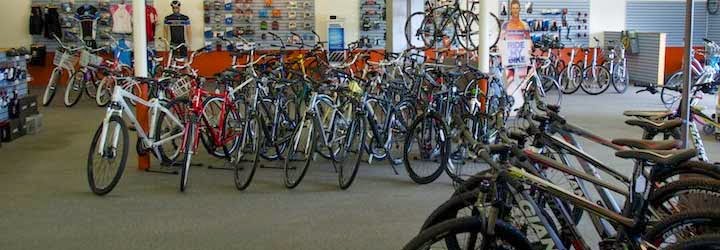A Total of Seven New Men’s Series and 28 Global Models Feature 27.5 Wheel Technology, Which Giant Has Been Developing For the Past Two Years.
 |
| Anthem 27.5 0 |
Giant,
the world leader in cycling technology, is revolutionizing its 2014
off-road lineup with a full range of new bikes featuring 27.5-inch wheel
technology. Some of Giant’s most recognizable and successful off-road
models—including XtC, Anthem, and Trance—will now include 27.5 choices
in both composite and aluminum frame options.
Several prototype Giant
27.5 bikes have already been ridden to major race wins in pro XC and
enduro competition.
 |
| XTC Advanced 27.5 2 (HardTail) |
“The
diversity and range of our new collection of 27.5 bikes shows how
strongly we believe in this new technology,” said Kevin Dana, Giant
Global Off-Road Category Manager. “That belief is founded on a lot of
internal research and testing. We worked with a wide variety of
riders—and from our World Cup XC pros to our enduro riders, all of them
feel strongly that the end result is improved performance.”
Research
and ride testing in different off-road racing disciplines, and in a
variety of terrain, showed that the 27.5 wheel size delivers significant
performance advantages in three key areas: weight, efficiency and
control. Bikes with 27.5-inch wheels displayed some of the best
characteristics of 26 and 29-inch wheels—but without the compromises
associated with each.
 |
| Talon 27.5 |
Truly
capitalizing on the advantages of 27.5 required a deep commitment to
engineering and development. Giant’s team of engineers, product
developers and athletes looked at each new model individually, dialing
in the frame features and geometry to optimize the new wheel size for
particular types of terrain and performance goals.
The end result
is a full line of purpose-built 27.5 performance bikes for all different
types of off-road riding. From the XC World Cup-proven XtC Advanced
27.5 hardtail to the trail and enduro focused Trance Advanced 27.5, each
series has undergone extensive development from the ground up.
 |
| Trance Advanced 27.5 2 |
For
elite-level Giant XC pros like Swedish national champion Emil Lindgren,
the lighter weight and quicker acceleration offer a huge advantage.
“When
you’re racing cross-country, you’re pushing the limits,” said Lindgren.
“The heart rate is maxed and you want a bike that responds and makes
the effort feel a little easier. Going from a 26 to a 29, there’s a big
difference in the way the bike rides. But with 27.5, it’s the perfect
balance of quickness and acceleration of a 26 with the traction and
stability of a 29er.”
To meet the needs of racers like Lindgren
and teammate Michiel van der Heijden, who recently won the Dutch XC
Championships aboard a prototype 27.5 hardtail, Giant developed 27.5
versions of its XtC platform in both Advanced-grade composite (XtC
Advanced 27.5) and ALUXX SL aluminum (XtC 27.5).
For technical XC
terrain, Giant developed 27.5 versions of its legendary Anthem platform,
available in both Advanced-grade composite (Anthem Advanced 27.5) and
ALUXX SL aluminum (Anthem 27.5) frame options featuring Maestro
Suspension with 4 inches of travel. Giant Factory Off-Road rider Adam
Craig played a major role in the bike’s development, and rode his
prototype Anthem Advanced 27.5 to a win at an Oregon Enduro Series event
earlier this summer.
“For cross-country racing, the 27.5 offers a
very clear advantage,” Craig said. “It’s not just about how fast a bike
rolls, but how fast it can be in real racing scenarios, and that
involves accelerating, braking, climbing, a lot of low-speed stuff. A
bike that’s a little more nimble and quick is ultimately an advantage.”
For more aggressive trail and enduro riding—the type that Australian
enduro racer Josh Carlson has been racing with his prototype Trance
Advanced 27.5, which features 5.5 inches of Maestro rear suspension
technology—the added control and stability makes a huge difference.
“It
feels amazing,” said Carlson, who rode a prototype Trance Advanced 27.5
to several enduro race wins in North America this spring. “You can
charge through rock gardens and gnarly terrain with total confidence
that it’s going to be quicker and faster and safer than any bike you’ve
ever ridden. You can come into corners quicker and exit with so much
more speed.”
The Trance platform is also available with the
Advanced-grade composite frame (Trance Advanced 27.5)or ALUXX SL
aluminum (Trance 27.5). Both the Trance Advanced 27.5 and Trance 27.5
also come in an “SX” model for more aggressive, gravity-oriented riding.
In
addition to all of the above off-road performance models, Giant is also
making its 27.5 technology available to more riders of all levels with
its full line of Talon 27.5 ALUXX aluminum hardtail off-road bikes.
For 2015, Giant is offering the following off-road series with 27.5 technology:
XtC Advanced 27.5 (Advanced-grade composite hardtail XC)
XtC 27.5 (ALUXX SL aluminum hardtail XC)
Anthem Advanced 27.5 (Advanced-grade composite full-suspension XC)
Anthem 27.5 (ALUXX SL aluminum full-suspension XC)
Trance Advanced 27.5 (Advanced-grade composite full-suspension trail and enduro)
Trance 27.5 (ALUXX SL aluminum full-suspension trail and enduro)
Talon 27.5 (ALUXX aluminum hardtail XC)
 1904 Staples Mill Rd.
Richmond, VA 23230
(804) 658-2126
randy@pedalpowerbicycles.com
www.pedalpowerbicycles.com
1904 Staples Mill Rd.
Richmond, VA 23230
(804) 658-2126
randy@pedalpowerbicycles.com
www.pedalpowerbicycles.com




























